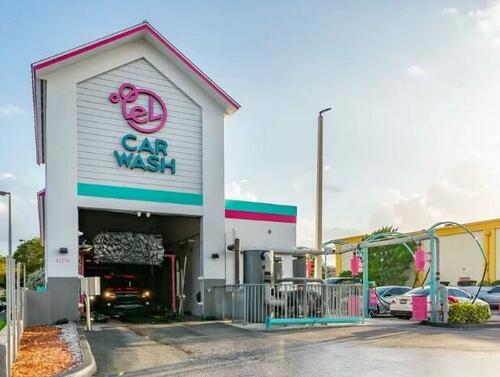The Great American Car Wash Boom
We can’t help but notice them: car washes seem to be everywhere nowadays.
Everywhere you go, new ones are popping up and, with that, they’re usually packed. We were gifted some insight as to why this is happening last week, when Bloomberg revealed that the models are “fueled by private equity” and “subscription based”. In other words, catnip to investors.
They’re so popular that the town of Streetsboro, Ohio, had to put a moratorium on them, the article noted. Similar bans have happened in places like Buffalo, New Jersey and Alaska.
Mayor Glenn Broska told Bloomberg: “A car wash does not provide a lot of jobs for the community, and they take up a lot of space. If you want to invest your dollars into a car wash, then God bless you. But at the same time, I’m responsible for 17,500 people and have to be cognizant of their wishes.”
Despite the disruptions caused by Covid-19, Americans have continued frequenting car washes, maintaining strong retail fundamentals, according to Bloomberg. The industry has seen significant investment, with around 50 groups actively consolidating or expanding car wash businesses, investing over $750 million in expansion efforts last fall.
Although 2023 faced financial challenges, slowing mergers and acquisitions, the outlook remains optimistic with potential for high revenues.
The American car wash industry, with a history dating back to the early 1900s, has evolved significantly from manual washes to automated systems. This evolution reflects not only technological advancements but also the cultural significance of cars. The industry, once characterized by small, family-owned operations, has grown into a scalable business model emphasizing efficiency and sustainability, with leading companies focusing on reducing water usage and improving recycling methods.
Ian Rickwood, CEO and founder of Henley Investment Management said: “We think this is the coffee market in the early ’90s, when Starbucks got going. One came to town, and people said, ‘$5 for a coffee, surely nobody will buy more than one cup a day.’ And of course, another one opened and another one opened and the category expanded because people began to change their habits.”
Bloomberg writes that decades ago, car wash businesses relied heavily on manual labor, requiring up to 50 employees, and were significantly affected by weather conditions, impacting profits.
Nowadays, technological advancements have streamlined the washing process to as little as 90 seconds, reduced labor costs through automation, and introduced stable income through membership models, mitigating weather-related risks. The 2017 tax reforms under Donald Trump provided a boost by allowing full depreciation on new equipment, an incentive Congress is considering reinstating.
Emil Khodorkovsky of real estate firm Forbix commented: “If private equity thinks it’s sexy, they’re gonna throw money at it, right?”
The sector stands out for its potential, with locations earning up to 80% of their revenue from subscriptions and boasting a 50% margin before interest, taxes, depreciation, and amortization. The move towards membership models not only increases usage and revenue but also presents a significant growth opportunity, potentially increasing annual washes in the U.S. from 2 billion to 3 billion.
“This is America; people are going to make money. And they figured out how to make money with a car wash,” Broska concluded.
You can read Bloomberg’s full feature here.
Tyler Durden
Tue, 03/05/2024 – 17:20
via ZeroHedge News https://ift.tt/pol7WnR Tyler Durden
